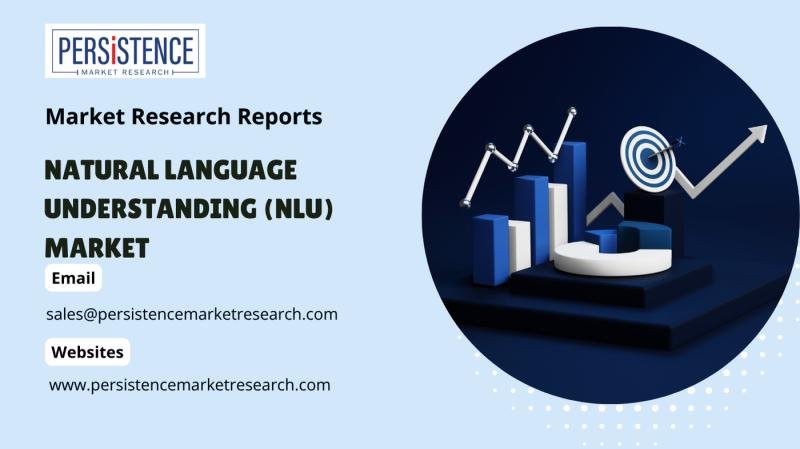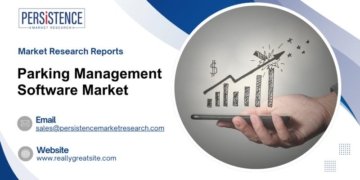The global natural language understanding (NLU) market is on a sharp growth trajectory as enterprises increasingly rely on advanced AI models to power communication, automation, and decision-making. The market is projected to reach US$ 13.7 billion in 2024 and expand at a robust CAGR of 22.5%, reaching US$ 56.7 billion by 2031. This growth is fueled by the integration of multimodal AI systems that combine text, voice, and image processing, creating more intuitive and human-like interactions across industries.
By 2031, it is estimated that over 60% of enterprises will employ generative NLU models for content management, conversational AI, and task automation. Meanwhile, edge-based NLU deployments are expected to power 70% of conversational AI systems, reflecting the growing need for low-latency, real-time processing. Among the key segments, text analysis applications are projected to account for nearly 27.8% of the market, as businesses seek actionable insights from unstructured data to optimize workflows and enhance decision-making processes.
Elevate your business strategy with comprehensive market data. Request a sample report now: https://www.persistencemarketresearch.com/samples/34995
Key Highlights of the Industry
• NLU is finding applications in healthcare through integration with wearables and diagnostic tools.
• Conversational commerce systems powered by NLU are driving growth in the retail sector.
• Personalized learning platforms with NLU are transforming the education industry.
• Advancements in language-agnostic models and machine translation are accelerating adoption.
• By 2031, half of all customer-facing applications will feature emotion-aware NLU capabilities.
• Domain-specific NLU solutions emphasizing compliance and contextual accuracy are emerging rapidly.
Market Segmentation
The natural language understanding market is segmented by offering, type, and application. By offering, the solutions segment is estimated to account for a dominant 65% market share in 2024, driven by the ability of customized NLU platforms to integrate seamlessly into enterprise systems. Services such as consulting, deployment, and training are also expected to expand as businesses adopt NLU at scale.
In terms of type, hybrid NLU systems are projected to hold a 55.4% market share in 2024. Hybrid models combine rule-based methods with machine learning, enabling enterprises to retain control while benefiting from flexibility and contextual understanding. On the application side, text analysis and conversational AI remain key drivers, with growing traction in sectors like e-commerce, healthcare, and financial services.
Regional Insights
North America is expected to hold the largest share of the NLU market, accounting for 43.2% in 2024, primarily due to the region’s strong cloud adoption, advanced AI ecosystem, and high enterprise investment in automation. The U.S. leads the charge with widespread integration of conversational AI across customer service and enterprise applications.
In Asia Pacific, the NLU market is projected to register a CAGR of 21.3% through 2031, fueled by the rise of e-commerce platforms, digital payments, and multilingual communication needs. Countries like China, India, and Japan are driving adoption as businesses prioritize localized solutions that cater to diverse linguistic markets.
Market Drivers
The market is primarily driven by the adoption of IoT devices, 5G connectivity, and multimodal AI systems. Enterprises are increasingly recognizing the value of NLU in delivering personalized customer experiences, streamlining communication, and enabling predictive analytics. The demand for multilingual support, emotion-aware capabilities, and low-resource language integration further strengthens the market’s momentum.
Market Restraints
Challenges include data privacy concerns, complexity in training AI models, and high implementation costs. Many enterprises struggle with integrating NLU systems into legacy IT infrastructure, while maintaining compliance with global data regulations remains a significant hurdle. Additionally, accuracy gaps in low-resource languages pose limitations for global scalability.
Market Opportunities
Opportunities lie in the development of domain-specific NLU systems, cloud-based deployments, and AI-powered personalization engines. The integration of NLU in healthcare diagnostics, retail commerce, and education platforms will open lucrative growth avenues. The rising emphasis on emotion-aware AI and contextual intelligence is expected to revolutionize customer-facing industries, providing vendors with significant expansion potential.
Do You Have Any Query Or Specific Requirement? Request Customization of Report: https://www.persistencemarketresearch.com/request-customization/34995
Reasons to Buy the Report
✔ Comprehensive analysis of global NLU market trends and growth outlook.
✔ Insights into segmentation by offering, type, and application.
✔ Regional breakdown highlighting North America and Asia Pacific trends.
✔ Competitive landscape and strategic profiling of key market players.
✔ Growth opportunities in healthcare, education, and retail sectors.
Frequently Asked Questions (FAQs)
How big is the global natural language understanding (NLU) market in 2024?
Who are the key players in the global NLU market?
What is the projected CAGR of the NLU market between 2024 and 2031?
What is the market forecast for NLU by 2031?
Which region is estimated to dominate the industry through the forecast period?
Company Insights
Key players operating in the natural language understanding market include:
• IBM Corporation
• Google LLC
• Amazon Web Services (AWS)
• Microsoft Corporation
• Baidu Inc.
• Meta Platforms, Inc.
• SAP SE
Recent Developments:
1. In 2024, Google announced new multimodal NLU features for its AI platforms, integrating text, voice, and vision for enterprise-grade applications.
2. IBM introduced domain-specific NLU solutions designed for regulated industries such as finance and healthcare, focusing on compliance and contextual precision.
Conclusion
The global natural language understanding market is entering a transformative phase, with multimodal AI, generative models, and emotion-aware systems shaping the future of enterprise communication. As industries move toward automation, personalization, and compliance-driven solutions, the demand for NLU will accelerate across healthcare, retail, and education. With North America leading adoption and Asia Pacific emerging as a fast-growing market, vendors have significant opportunities to innovate and expand globally.
Related Reports:
Automated Border Control Market https://www.persistencemarketresearch.com/market-research/automated-border-control-market.asp
Data Quality Management Market https://www.persistencemarketresearch.com/market-research/data-quality-management-market.asp
Real Time Analytics Market https://www.persistencemarketresearch.com/market-research/real-time-analytics-market.asp
Internet Radio Market https://www.persistencemarketresearch.com/market-research/internet-radio-market.asp
Contact Us:
Persistence Market Research
G04 Golden Mile House, Clayponds Lane
Brentford, London, TW8 0GU UK
USA Phone: +1 646-878-6329
UK Phone: +44 203-837-5656
Email: sales@persistencemarketresearch.com
Web: https://www.persistencemarketresearch.com
About Persistence Market Research:
At Persistence Market Research, we specialize in creating research studies that serve as strategic tools for driving business growth. Established as a proprietary firm in 2012, we have evolved into a registered company in England and Wales in 2023 under the name Persistence Research & Consultancy Services Ltd. With a solid foundation, we have completed over 3600 custom and syndicate market research projects, and delivered more than 2700 projects for other leading market research companies’ clients.
Our approach combines traditional market research methods with modern tools to offer comprehensive research solutions. With a decade of experience, we pride ourselves on deriving actionable insights from data to help businesses stay ahead of the competition. Our client base spans multinational corporations, leading consulting firms, investment funds, and government departments. A significant portion of our sales comes from repeat clients, a testament to the value and trust we’ve built over the years.
This release was published on openPR.



















